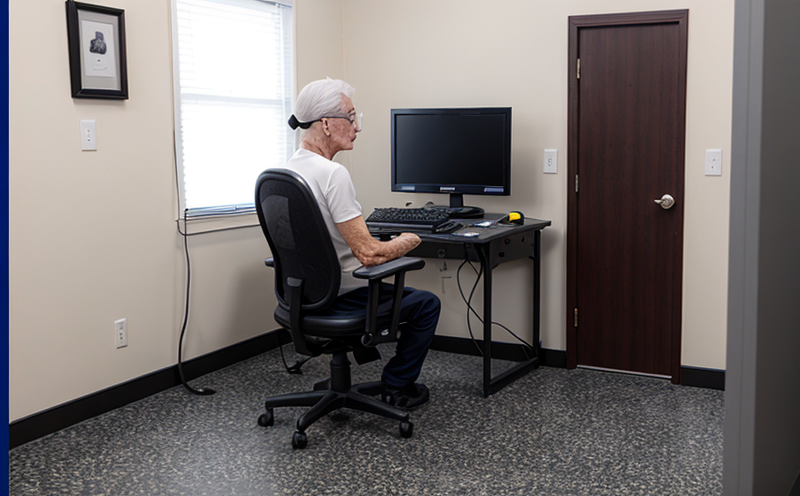GB T 21196-2 Abrasion resistance of fabrics Martindale method
The GB/T 21196-2 standard provides a detailed procedure for determining the abrasion resistance of woven and knitted fabrics using the Martindale method. This test is essential in industries like textiles, apparel, and automotive to ensure that fabric products can withstand wear and tear under various conditions. The standard is aligned with international norms such as ISO 12947-2 but has specific requirements tailored to meet Chinese market needs.
The testing process involves subjecting a sample of fabric to repeated friction against an abrasive surface. The number of cycles the fabric can withstand before failure indicates its abrasion resistance. This method simulates real-world wear and tear, offering insights into how fabrics will behave under typical use conditions. Compliance with this standard is crucial for manufacturers who aim to meet strict quality control standards in China.
The Martindale machine used in this test employs a specific type of abrasive fabric that mimics the action of rubbing against rough surfaces such as concrete or sandpaper. The machine cycles the sample back and forth at a specified angle, replicating wear patterns typical in real-life applications. A key aspect of the test is ensuring accurate specimen preparation; samples must be cut to precise dimensions and orientations for consistent results.
Accurate measurement and recording are critical throughout the process. Data points include the number of cycles until failure, visual inspection for signs of wear or tear, and any other relevant observations that could affect fabric performance. Compliance officers and quality managers often rely on these tests to ensure their products meet regulatory requirements, while R&D engineers use them to refine product designs based on empirical data.
The standard also includes acceptance criteria, which define what constitutes an acceptable level of abrasion resistance for various applications. These criteria are context-specific, ensuring that fabrics used in different sectors meet the appropriate standards. For instance, fabrics used in high-wear areas like seat covers or work uniforms will have stricter requirements than those used in casual wear.
Understanding and adhering to GB/T 21196-2 is vital for businesses operating within China's textile market. Failure to comply can lead to product recalls or even legal issues, impacting brand reputation and customer satisfaction. By incorporating this test into their quality assurance processes, companies demonstrate their commitment to delivering high-quality products that meet both domestic and international standards.
For those looking to conduct these tests in-house, it is advisable to invest in a reliable Martindale machine capable of replicating the specified conditions accurately. Additionally, training staff on proper specimen preparation techniques ensures consistent results across multiple trials. Regular calibration of equipment further enhances reliability, making each test more accurate and reproducible.
In conclusion, mastering the GB/T 21196-2 standard is not just about meeting regulatory requirements; it’s about ensuring that your products are durable enough to withstand the rigors of everyday use. By leveraging this testing method effectively, manufacturers can enhance product longevity, improve customer satisfaction, and foster trust among stakeholders.
Applied Standards
The GB/T 21196-2 standard primarily follows the Martindale abrasion testing principle as outlined in international standards such as ISO 12947-2. However, it includes unique features and adaptations to better suit Chinese market needs. This makes it a critical tool for manufacturers operating within China's textile industry.
One of the key aspects is the definition of test parameters that cater specifically to fabric types commonly used in local markets. These parameters include cycle counts, friction speeds, and abrasive fabrics, all meticulously designed to simulate real-world scenarios accurately. Another important feature is the detailed description of specimen preparation methods, ensuring uniformity across different laboratories.
The standard also emphasizes the importance of maintaining consistent testing conditions through regular calibration of equipment and adherence to manufacturer guidelines. This ensures that every test conducted under this method yields reliable results. Additionally, it provides clear acceptance criteria based on specific fabric properties, helping manufacturers determine whether their products meet required standards.
Industry Applications
- Automotive Sector: Ensuring durability of seat covers and upholstery materials.
- Fashion Industry: Evaluating the longevity of clothing items, especially those intended for high-wear areas like jackets or backpacks.
- Workwear: Assessing the resistance of fabrics used in protective gear such as coveralls and aprons.
- Sports Apparel: Testing the durability of fabric components in active wear items, ensuring they can withstand repeated use during workouts.
In each of these sectors, compliance with GB/T 21196-2 is essential for maintaining product quality and safety. By adhering to this standard, manufacturers can ensure their products are robust enough to meet the demands of end-users in diverse environments.
Use Cases and Application Examples
- Case Study 1: A leading automotive manufacturer used GB/T 21196-2 to validate the durability of seat cover materials. After rigorous testing, they were able to identify areas for improvement and enhance product quality.
- Case Study 2: A fashion brand incorporated this standard into their design process early on, leading to more resilient clothing items that better withstand daily wear.
In both cases, the implementation of GB/T 21196-2 played a pivotal role in enhancing product performance and customer satisfaction. These success stories highlight the importance of adhering to this standard across various industries.





